275 MacLaren Street, Ottawa, ON K2P 0L9
Résumé et abrégé du démarrage du projet
Contexte
Selon certaines études, si la population autochtone pouvait atteindre le même niveau de scolarité et de bien-être social que ses homologues non autochtones, le PIB du Canada pourrait augmenter de 401 milliards de dollars d’ici 2026 (Kar-Fai et Sharpe, 2012; Sharpe et Arsenault, 2010) . En réduisant l’écart en matière d’éducation entre les Autochtones et les non-Autochtones, on pourrait dégager « un bénéfice social total» de 90 milliards de dollars pour la Saskatchewan (Howe, 2011). Le maintien de la surreprésentation des Autochtones dans le système de justice, au lieu d’investir dans l’éducation et dans d’autres mesures, coûtera à la Saskatchewan jusqu’à 13 milliards de dollars sur 20 ans (Findlay & Weir, 2004).
Ces statistiques sont révélatrices des coûts et des avantages rattachés au changement, aux inégalités où l’éducation est souvent un synonyme d’injustice et d’exclusion des possibilités économiques et d’autres natures. Par exemple, les Autochtones connaissent des taux de chômage plus élevés, des gains plus faibles et des taux de participation à la population active inférieurs à ceux de la population non autochtone du Canada (Statistique Canada, 2011, EDSC, 2014, Kar-Fai et Sharpe, 2012, CNDEA, 2015). Bien que beaucoup de progrès aient été réalisés et que les Autochtones contribuent de façon importante à la société et à l’économie canadiennes, le rapport d’étape de 2015 fait état de disparités persistantes au chapitre de l’éducation, de l’emploi et du logement. En 2010, l’écart de revenu s’était creusé de 2,5 % par rapport à 2000 et le taux de chômage à 15 % demeure le double de celui observé chez les non-Autochtones (7,5 %) (CNDEA, 2015).
C’est en Saskatchewan qu’on observe l’écart le plus important en matière d’éducation postsecondaire au pays (Spence, Wingert et White, 2011). La disparité est encore plus grande quant au niveau de scolarité des Autochtones de sexe masculin vivant en milieu urbain en Saskatchewan (Parriag et Chaulk, 2011; Richards, 2008), qui sont moins susceptibles d’être représentés dans le marché du travail. L’écart sur le plan de l’éducation serait tributaire d’un financement limité et de niveaux inférieurs de préparation à l’éducation et d’obtention de diplômes d’études secondaires (Parriag et Chaulk, 2011; Sloane-Seale, Wallace et Levin, 2001), tandis que le racisme dans les établissements postsecondaires a été corrélé à un taux élevé de décrochage scolaire (Conseil des ministres de l’Éducation, 2002, Preston, 2008, RCAU, 2012).
Dans leur étude sur la qualité de vie des Autochtones vivant en milieu urbain à Saskatoon, Findlay et coll. (2014) ont constaté que la discrimination, les séquelles des pensionnats indiens et les problèmes sociaux « ont marginalisé les Autochtones vivant en milieu urbain, réduit l’inclusion sociale et les ont même aliénés de leur propre culture et enseignements traditionnels » (p.2). Les constatations ont mis en relief la nécessité de répondre aux besoins culturels et spirituels par l’éducation (extrêmement ou très important pour 90 % des répondants) afin de renforcer le sentiment d’appartenance communautaire.
La sous-représentation des Autochtones dans les efforts d’élaboration des politiques d’éducation pour les Autochtones est considérée comme « inacceptable ». Les dirigeants des Premières Nations refusent de permettre que leurs enfants soient « de nouveau victimisés au nom de l’éducation ». . . Nous luttons depuis pour reprendre cette responsabilité » (Shawn Atleo, cité dans Kennedy, 2013). Les appels à l’action de la Commission de la vérité et réconciliation insistent de même sur la nécessité de mobiliser les Autochtones pour élaborer des stratégies éducatives afin d’ « éliminer les écarts en matière d’éducation et d’emploi » et d’élaborer de nouvelles lois sur l’éducation qui soient adaptées sur le plan culturel et assorties d’enveloppes de financement suffisantes. Les connaissances autochtones, ainsi que le contenu et la pédagogie autochtones, sont au cœur des changements recommandés.
Objectif du projet
Le but de cette étude est de comprendre l’expérience vécue des étudiants autochtones en milieu urbain de niveau postsecondaire à Saskatoon, afin de cerner les facilitateurs et les inhibiteurs des environnements d’apprentissage pour optimiser le potentiel de ces étudiants. En faisant fond sur les travaux réalisés dans d’autres compétences (Brown, Knol et Fraehlich, 2008; Embleton, 2011; Helme & Lamb, 2011; Silver, Klyne et Simard, 2003), l’étude proposée dégagera des données de référence sur les facteurs qui facilitent ou entravent la réussite scolaire au Saskatchewan Indian Institute of Technologies, à l’Université des Premières nations du Canada, à l’école polytechnique de la Saskatchewan et à l’Université de la Saskatchewan.
Questions de recherche
Méthodologie
L’étude utilisera des méthodes mixtes et une approche de recherche-action communautaire décolonisante en consultation avec le comité consultatif du projet :
Oganismes communautaires et collaborateurs
Bureau du commissaire aux traités
Indigenous Voices Programs
Gwenna Moss Centre for Teaching Effectiveness
Indigenous Graduate Students’ Council
Université de la Saskatchewan
Saskatchewan Indian Institute of Technologies
École polytechnique de la Saskatchewan
Université des Premières nations du Canada
Principale personne-ressource et chercheuse principale
Isobel M. Findlay
Professeure émérite, gestion et marketing
Edwards School of Business
Université de la Saskatchewan
[email protected]